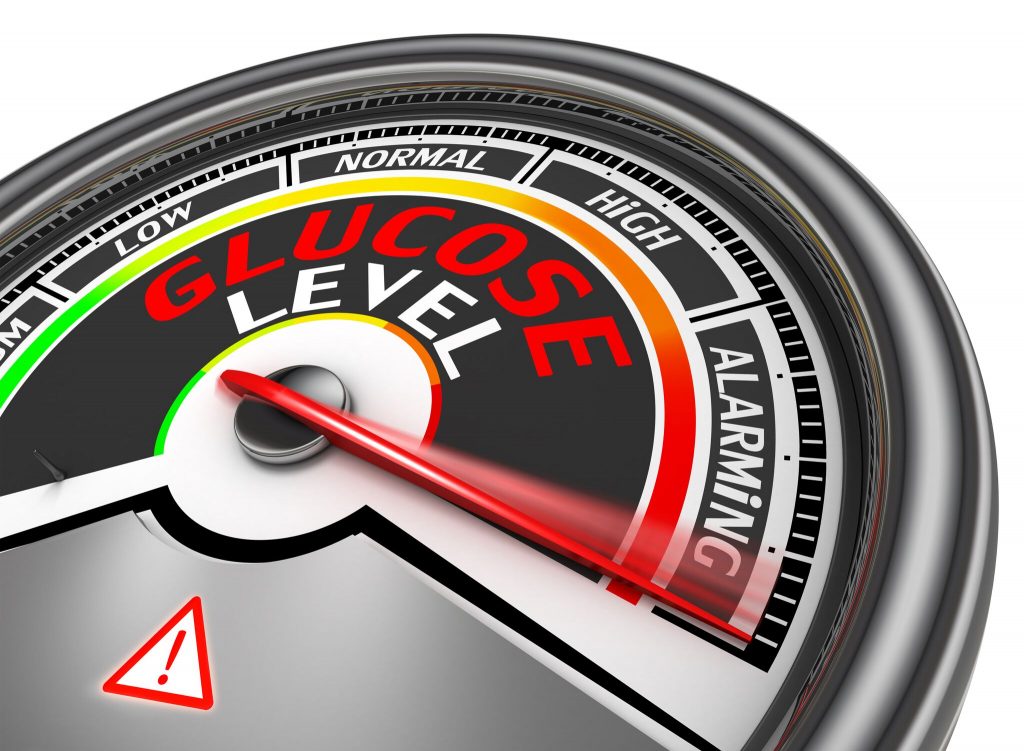High blood sugar is one of the biggest hurdles to improving health, getting in shape and performing well.
In this article, I discuss 10 of the biggest reasons why blood glucose levels tend to go high in people living with diabetes during exercise. Please bear in mind that Type 1 and 2 diabetes are different and need to be managed differently.
Key factors include: the type of medication, physical activity levels, training volume, muscle mass, other illnesses and susceptibility to life stress.
1. Hypoinsulinemia.
You simply don’t have enough insulin in your bloodstream to facilitate the transport of glucose into target tissues. As a result, your blood glucose levels remain high, increasing the risk of ketoacidosis which exacerbates hyperglycemia.
This may be due to missing a dose, eating too many carbs or uncontrolled glucose production from your liver during times of stress.
Fix. Administer appropriate amounts of insulin or other diabetic medication specific to your abnormal blood glucose level. Only do this under the close guidance and monitoring of a professional health care team.
2. Prolonged Pump disconnect.
Similar to above. Lack of insulin in the bloodstream means only one thing for the individual deficient in insulin: High blood glucose.
Fix. Ensure you pump is well connected at all times, especially if you’ve spent the day doing manual labour. Be mindful that wearing an exercise belt, for powerlifting and bodybuilding purposes can lead to pump discomfort and disconnect during training, consequently leading to high blood glucose.
3. Malfunctioning needles.
If your needle fails to work, you won’t be able to administer insulin accurately, or even at all.
Fix. Test needle function by squirting out a few units of insulin. If it’s jammed, replace it immediately. Always carry spares. Trust me there is nothing worse than a malfunctioning needle.
4. Overuse of stimulants.
Caffeine, Ephedra, Yohimbine and other popular bodybuilding supplements are stimulants. They stimulate a sympathetic (fight or flight) response within the body, which increases the production of glucose raising hormones.
In those who are deficient or fail to produce insulin, overuse of stimulants can increase blood glucose levels, and, if left unattended, can result in hyperglycemia. This isn’t a good place to be prior to training.
Fix. Measure your blood glucose response to popular stimulants. Bear in mind circulating insulin and physical activity may influence your response. I personally test my response in a fasted state when other variables aren’t as much of an influence.
5. Anaerobic exercise.
High intensity exercise is a stressful form of training which has the potential to increase blood glucose levels because insulin levels fail to rise and compensate for the increased production of glucose raising hormones in someone with diabetes.
It is very well established that diabetics involved in powerlifting and bodybuilding style training increase the production of such glucose raising hormones which increase’ the liver’s production of glucose and limits glucose disposal.
In individuals without diabetes, increased production of glucose raising hormones and hyperglycemia is compensated for by an increase in insulin secretion, usually when exercise is finished.
Fix. Monitor blood glucose closely and correct accordingly with appropriate administration of insulin as and when needed if hyperglycemia were to occur. Failing to respond to high blood glucose increases muscle loss, reduces performance and increases the possibility of diabetic related complications.
6. Very vigorous aerobic exercise.
This includes very tough aerobic exercise like mountain climbing, boxing, martial arts or mountain biking which tend to include intermittent periods of anaerobic work.
Similar to above – elevations in glucose raising hormones increase blood glucose. The diabetic’s ability to achieve glycemic control is hindered without administering the appropriate dose medication.
Fix. Monitor your blood glucose response to certain forms of exercise. Identify when and where blood glucose fluctuates. Observe the patterns and react accordingly as you become increasingly familiar with your body’s response.
7. Too many carbs.
Carbohydrate from food and drink has the greatest effect on blood glucose levels over any other ingested macronutrient. All carbohydrates are broken down into glucose which enters the bloodstream as fuel for instant use or storage for future use. Glucose is an essential fuel for the body, especially the brain.
One of the hallmarks of diabetes is a difficulty processing carbohydrate. Lower carbohydrate intakes are often suggested as a means of improving control. While this dietary approach may be a legitimate way of improving blood glucose control in sedentary individuals, those who train regularly may need more carbohydrate to fuel their training volume.
A higher intake of carbohydrate increases the potential for hyperglycemia, especially if insulin secretion is lost.
Fix. Dose accordingly.
Specialist diabetes education courses like DAFNE (Dose Adjustment For Normal Eating) are a great way of managing blood glucose levels in people with Type 1 diabetes. The courses empower people with the necessary skills required to calculate the appropriate dose of insulin needed to accommodate the correct amount of carbohydrate found in meals.
8. Stress.
Physical and emotional stress has the ability to increase blood glucose levels in people with all types of diabetes.
If you want to find out if mental stress is negatively affecting your glucose control, score your stress level on a scale of 1 to 10 (10 being worst) and correlate it with your blood glucose level.
If you’re repeatedly correlating high-stress scores with blood glucose levels beyond where they should be, given your insulin is dosed accurately to food eaten, you will gain a fair idea of how sensitive you are to stress.
This is common concern for diabetic bodybuilders, powerlifters and athletes who compete. The stress of competing can elevate blood glucose levels to the point where performance and appearance (in bodybuilding) is impaired. I recall how sensitive I was to mental stress in my competitive bodybuilding days as a diabetic. Hyperglycemia was a constant battle on show day.
Fix. Your perception to stress is important. Learning to respond instead of react to life’s stress is a good skill to possess, since most of the stress you encounter is self-imposed party tricks.
On the contrary, if you are under real threat, whether it be a lion or ex-wife, relocate.
Too much stress, not enough recovery and you put yourself in a prime position for injury, illness or worse, burnout!
I’ve found mediation and personal development great ways to improve my tolerance to life stress.
9. Infection/Illness.
The stress of illness on the body in conjunction with certain medication can cause blood glucose levels to rise, making them difficult to manage in people with type 1 diabetes.
High blood sugar levels weaken the immune system, while diabetes-related health complications, such as nerve damage and reduced blood flow to the extremities, increase the body’s vulnerability to infection, resulting in the illness and infections getting worse.
Fix. Test your blood glucose levels more often and administer the necessary amount of corrective medication to normalize blood glucose levels. Do your best to stay hydrated and if suffering loss of appetite consider supplementing with essential nutrients notably protein, essential fatty acids and a multi vitamin.
10. Denatured Insulin.
If you leave your insulin lying out in the sun or accidentally freeze it, expect it not to work as well. Insulin is a peptide hormone, comprised of different amino acids. Extreme temperature fluctuations can denature the peptide sequence compromising the structure and function of the hormone.
Insulin that doesn’t function properly will promote hyperglycemia.
Fix. Keep your insulin in a cool, dry, and dark place – simple.
Since you have made it to the end of this blog, you are obviously serious about your physique, so …
I’m going to give you an 85% off coupon for what many have coined the most advanced diabetes bodybuilding diet and training programs in the world. And, yes before you ask you can do SHRED first, then MASS (or vice versa)
They are also both an absolute steal too, at only £13 ($16)





